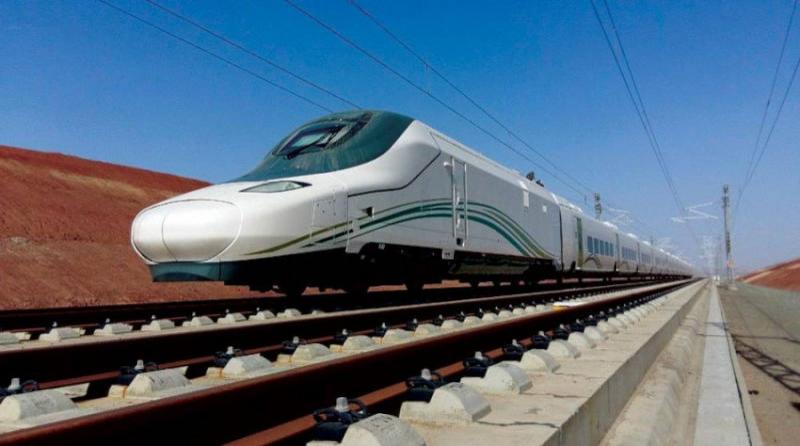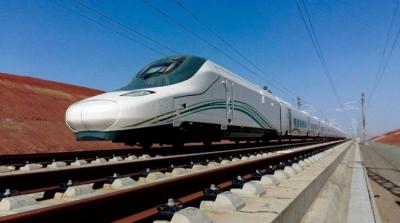Kuwait aims to play a significant role in achieving economic integration among Gulf Cooperation Council (GCC) countries and sustainable development through the Gulf railway project, leveraging its strategic location on the Arabian Gulf and its position at the intersection of major routes in the region. Kuwait seeks to enhance its role as a key center for trade and transportation, which will provide new avenues for growth and bolster its position as a vital hub for the flow of goods and passengers via the GCC railway network.
The railway line for the GCC countries begins in Kuwait, passing through Dammam to the Kingdom of Bahrain and to Qatar via the Salwa border, continuing from Saudi Arabia to the United Arab Emirates in the cities of Abu Dhabi and Al Ain, and then to Muscat via Sohar, spanning a total of 2,217 kilometers, according to the General Secretariat of the GCC.
### Project Concept
The idea of the project emerged during the GCC summit held in Bahrain in 2009, aimed at linking member countries for its positive effects on facilitating trade movement and free travel for citizens, alongside supporting joint investments which contribute to boosting trade exchange and economic integration among member states.
In this context, the General Secretariat of the Supreme Council for Planning and Development in Kuwait stated on its official website that the railway network project fulfills a Kuwaiti government commitment with GCC countries as part of the GCC railway network project. It added that the Public Authority for Roads and Land Transportation was tasked with coordinating with relevant authorities to carry out the railway project, which is expected to yield strategic and economic returns for Kuwait.
### Main Objectives
The project aims to enhance trade and economic exchange between GCC countries in ground transportation of passengers and goods, reinforcing social links among member states. It is expected to contribute to reducing road maintenance costs and sustainability due to decreased car usage for travel, in addition to lowering carbon emissions from the reduced number of trucks used for transporting goods.
The unified Gulf train will create new job opportunities and establish new urban areas at the stations along its route from Kuwait in the north to Muscat in the south of the Arabian Gulf.
### Implementation Phases
The Acting Director General of the Public Authority for Roads and Land Transportation, Eng. Khaled Al-Azimi, said that the study and implementation of the project were initially assigned to the partnership authority, with the feasibility study completed in 2012 and updated in 2016, making it a project executed through public-private partnership.
He mentioned that coordination took place with 23 ministries and government agencies to address obstacles to the project’s route and prepare documents for the consulting tender for the design of the project, as well as communicating with the Central Agency for Public Tenders to obtain approval to proceed with the tender process.
Al-Azimi noted that a number of international consulting firms submitted their proposals, with the technical study of the bids completed and sent to the Central Agency for Public Tenders for a decision on awarding the contract. He mentioned that the duration for executing the consulting study is 12 months, after which the tender for executing the project will be issued, with a planned duration of 30 months. According to the tendering system, it is proposed that the timeline for executing the part of the Gulf railway project relevant to Kuwait will be completed by late 2030.
The length of the first phase of the railway specific to Kuwait extends from the Nuwaiseeb border center in the south to the main passenger station in the Shadadiyah industrial area behind Kuwait International Airport, covering 111 kilometers with a train speed of 200 kilometers per hour.
In the UAE, the railway route to the Saudi border has been completed, and in April, Gulf Engineering and Construction Company announced on its official website that it had secured the project to design and construct the railway line connecting Abu Dhabi and Sohar in Oman (Hafeet), measuring 303 kilometers at an estimated cost of approximately $3 billion. The UAE’s Minister of Energy and Infrastructure, Suhail Al-Mazrouei, confirmed that the Hafeet project aligns with the Gulf railway initiative to achieve a pioneering Gulf vision for comprehensive integration.
In Qatar, the engineering designs for the GCC railway project and its national railway projects have been completed while Bahrain has updated its GCC railway route, which will connect Bahrain to Saudi Arabia via the planned bridge between the two kingdoms.
In February, the Director General of the Gulf Railway Authority, Eng. Mohammed Al-Shubrami, visited Kuwait as part of a tour of GCC countries to review the latest developments in the project and the status of the part specific to Kuwait.
### Kuwait-Riyadh Train
In a related initiative, the governments of Kuwait and Saudi Arabia agreed on June 4, 2023, to establish a railway line between Kuwait City and Riyadh to enhance economic relations through the development of passenger and freight transport services overland.
The project will utilize a high-speed train, also referred to as a magnetic train, capable of traveling between 200 to 250 kilometers per hour, covering the distance in no more than two and a half hours (150 minutes) compared to the seven hours (420 minutes) by car.
The Kuwaiti government announced on February 7 that a feasibility study for the railway link between Kuwait and Riyadh had commenced, with an expected completion within 100 days. The CEO and Vice Chairman of Agility, Tarek Sultan, told Kuwait's news agency KUNA that the train project connecting Kuwait and Riyadh would be a complement to the unified Gulf railway project. He added that linking Kuwait City and Riyadh via rail would enhance the flow of goods between the two Gulf capitals and establish a passenger transport service.
He expressed hope that the unified Gulf railway project would expand in the future through the establishment of new railway lines extending beyond the GCC countries to neighboring nations such as Jordan and Iraq.




